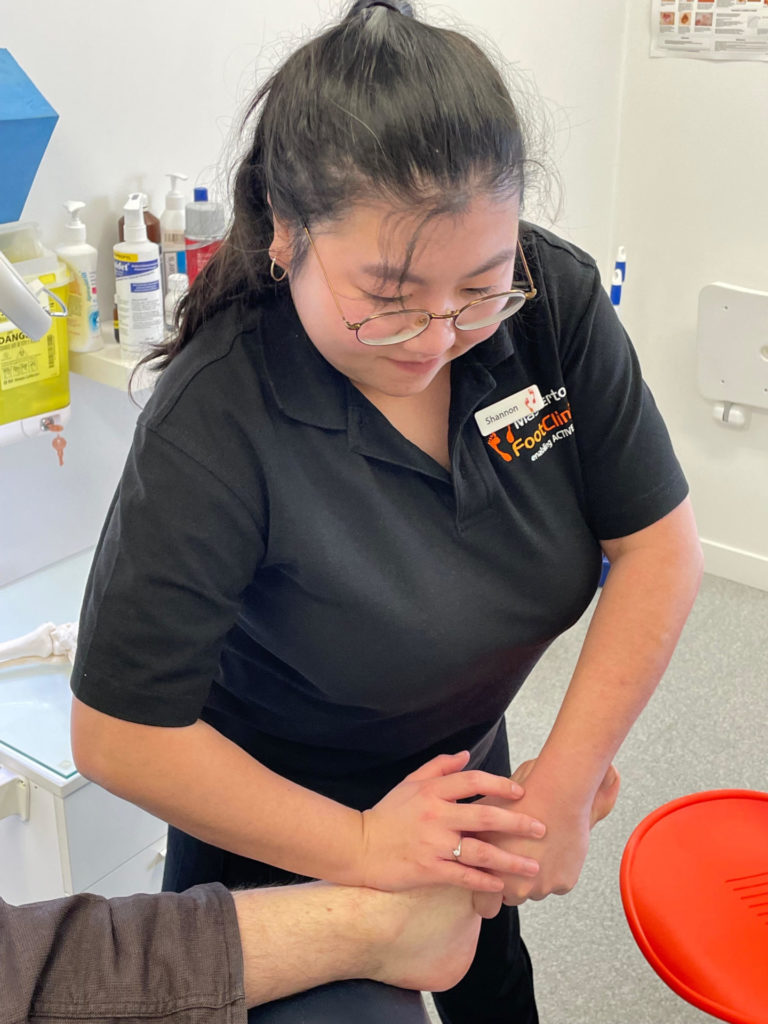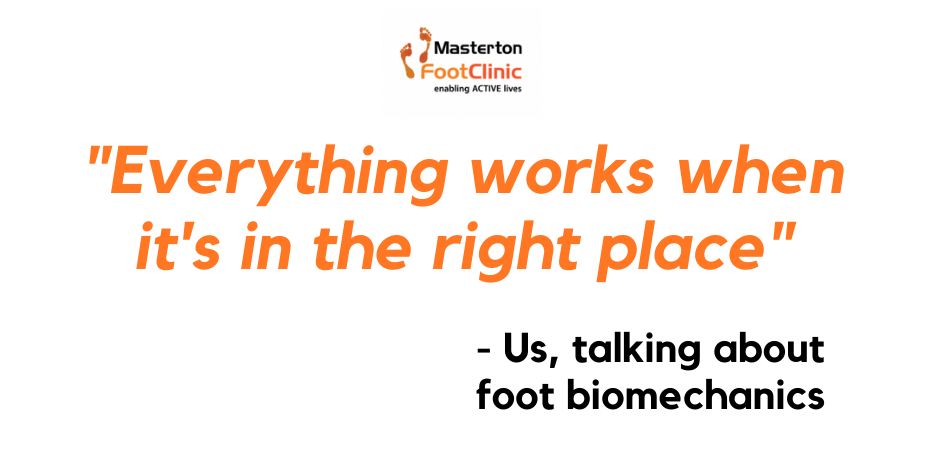
Foot mobilisation therapy (FMT) helps you alleviate foot and leg pain without medication, needles or surgery. It treats the cause of your pain, rather than just temporarily relieving the symptoms of the problem. Foot mobilisation is a popular and effective treatment used by podiatrists, physiotherapists and chiropractors worldwide, and we’re proud to bring it home to you, here in the Wairarapa.
What Is Foot Mobilisation Therapy?
Simply put, FMT involves the hands-on manipulation (movement) of stiff, dysfunctional joints in the feet by a qualified practitioner in order to improve joint alignment, release tension and help your feet and legs function more efficiently.
It operates on the simple but effective principle that when movement restrictions or misalignment in the joints is present, your body will move in a way that isn’t ideal for your muscles, tendons, ligaments and bones. This may place abnormal strain on other parts of the feet, or change the way you walk to be sub-optimal, which can all lead to ongoing pain and injury.
By ‘freeing’ up the joints to move naturally as they were intended to without restriction in three key ways, FMT helps you to overcome and prevent these foot problems.
The three key ways that FMT works:

This means that FMT helps to:
- Improve bone and joint alignment, thereby allowing muscles, tendons and ligaments to work efficiently
- Improve the range of motion of the joints, allowing fluid to flow more freely and movement to be optimised
- Improve your postural stability and balance by allowing the joints to function properly. This can mean both pain reduction and assist with preventing falls as well as improving confidence on the feet
- In injuries, allows the affected structures to heal properly by promoting healthy movement and reducing strain
Who Can Benefit From FMT?
We find FMT to be fantastic for joints that are misaligned, stiff, restricted and not moving as well as they should be.

This means that if you have any of the following, you will likely benefit from FMT:
- Arthritic foot pain
- Heel and arch pain and spurs, including plantar fasciitis
- Painful flat feet
- Bunions
- Cuboid syndrome
- Ongoing unresolved foot pain
- Painful high arches
- Ankle sprains, weakness or stiffness
- Sore or tight calves
- Hammer and clawed toes
- Forefoot pain, including from a neuroma
- Achilles tendinopathy
FMT Is Part Of The Big Picture
If you have a painful injury and can benefit from FMT, it’s likely that foot mobilisation will form a key part of your treatment plan, alongside other rehab techniques or podiatry treatments that work to actively heal injuries like shockwave treatment, or actively support and offload the injured area like orthotics.
Here at MFC, we find that the greatest success for your foot health and rehab is achieved by combining the relief of your painful or uncomfortable symptoms, with working to actively repair the problem or injury, and then treating the causes so that it’s less likely to recur in the future.
FAQ: What Does FMT Feel Like?
FMT is gentle and typically non-painful – any discomfort experienced comes directly from the injury or pain you currently have as opposed to the treatment itself. You lay back and relax – we’ll take care of the rest. We do need to use pressure and force to achieve the best results, and this is often described as a feeling of pressure being released or general relief.
FMT For Future Injury & Pain Prevention
While FMT can have significant short-term benefits for your immediate recovery by helping reduce pain and improving function, it also has your back for the long-term by treating the cause and not just the symptoms. By having strong, mobile joints without (or with reduced) restrictions, you can stay healthy and happy on your feet and help prevent injury.

FAQ: What Happens At A FMT Appointment?
Your first appointment starts with your podiatrist getting to know you and the cause of your pain or stiffness, performing a comprehensive assessment to understand the how’s, why’s and whats.
Your examination includes assessing your gait and movement patterns, evaluating the range of motion available in your joints and how this is affecting your gait, how it relates to your current problem, and the risk it may hold for you in the future.
After discussing it all with you and explaining which joints we’re going to manipulate and how it will help, we will then use our hands, and potentially some massage tools, to gently mobilise and manipulate your feet and joints. The hands-on time will vary depending on the severity of your stiffness and how many joints we’re walking on, but a FMT appointment generally lasts between 10 – 30 minutes.
We’ll prescribe a home exercise program for you to help support your progress at home, in between visits for FMT. As connective scar tissue takes on average three weeks to break down and regenerate, we recommend a course of six treatments over three weeks.
Your subsequent appointments will include checking your progress since your last visit, completing further foot mobilisation, and then making any adjustments to your treatment plan based on your progress to help optimise your recovery.
By assisting your joints to function optimally, our goal is to help you get to pain-free movement, better lower limb function, and a reduced risk for problems in the future.
[embedyt] https://www.youtube.com/watch?v=qrs4tLx30Rw[/embedyt]
FAQ: Who shouldn’t have FMT?
We won’t perform FMT where we don’t believe it will help you get the best results. Hence, foot mobilisation is not recommended for those with:
- A suspected fracture
- Hypermobile joints
- Joint coalitions
- Bony blocks
- Osteochondral lesions
FAQ: How much does FMT cost?
What price would you pay to be free of pain, and live a more comfortable active life?
FMT sessions are billed as a 20-minute consultation, for the most current pricing, please call our team on 063704057. As every patient is different, we recommend discussing what your needs are at the time of the initial consultation with your podiatrist – this way you can get the most accurate idea of cost, but also whether it’s the right therapy for you.
